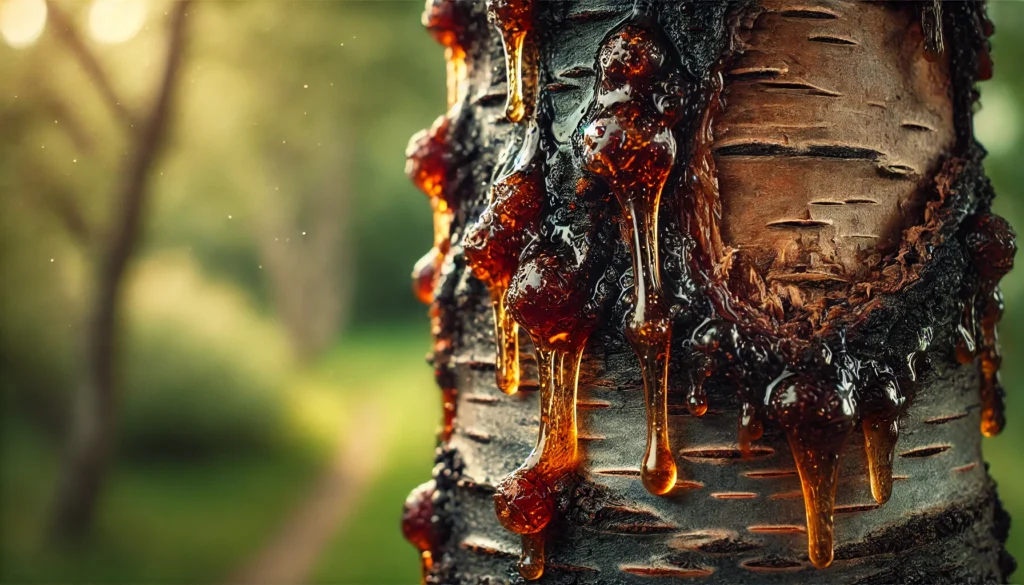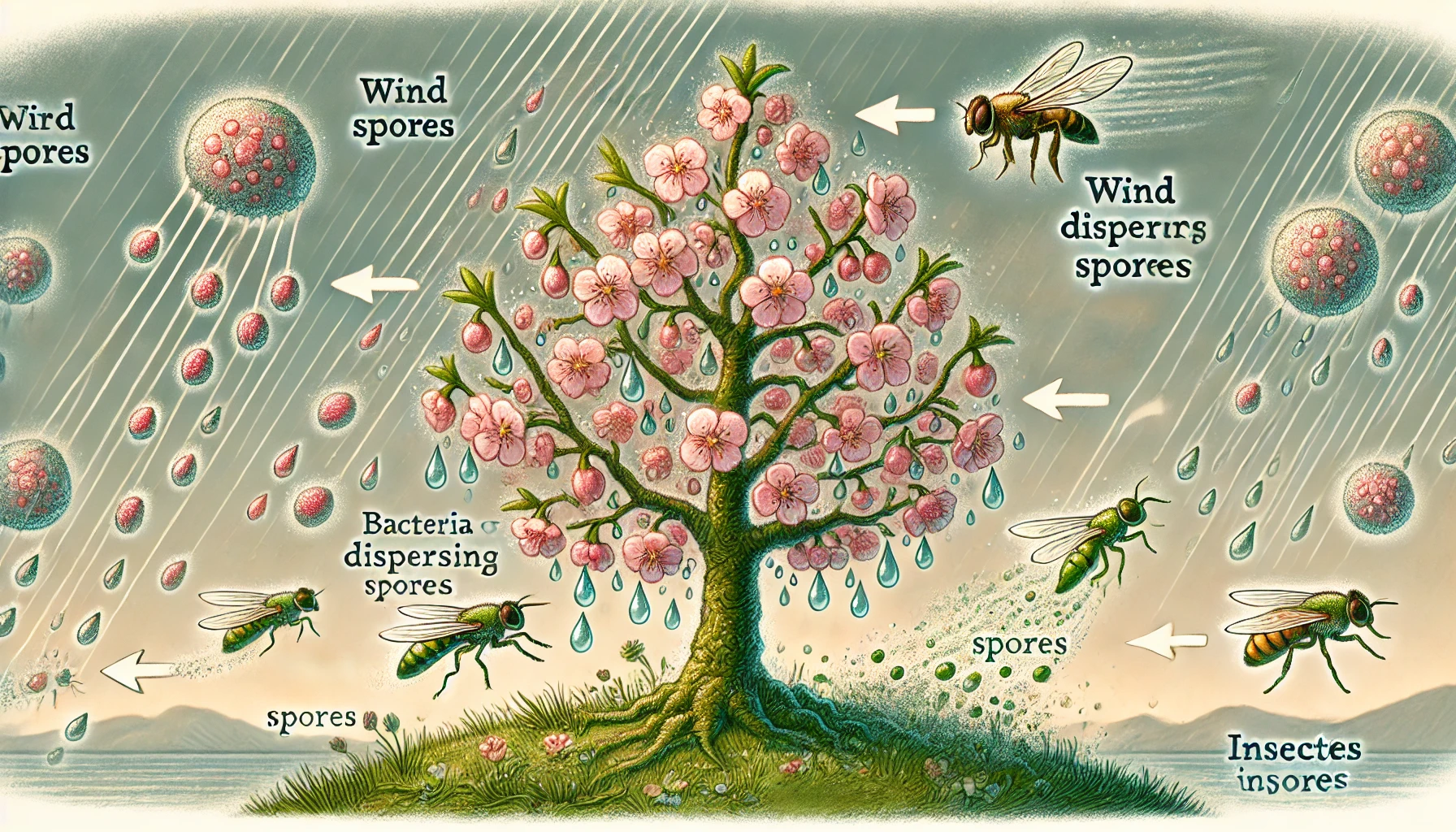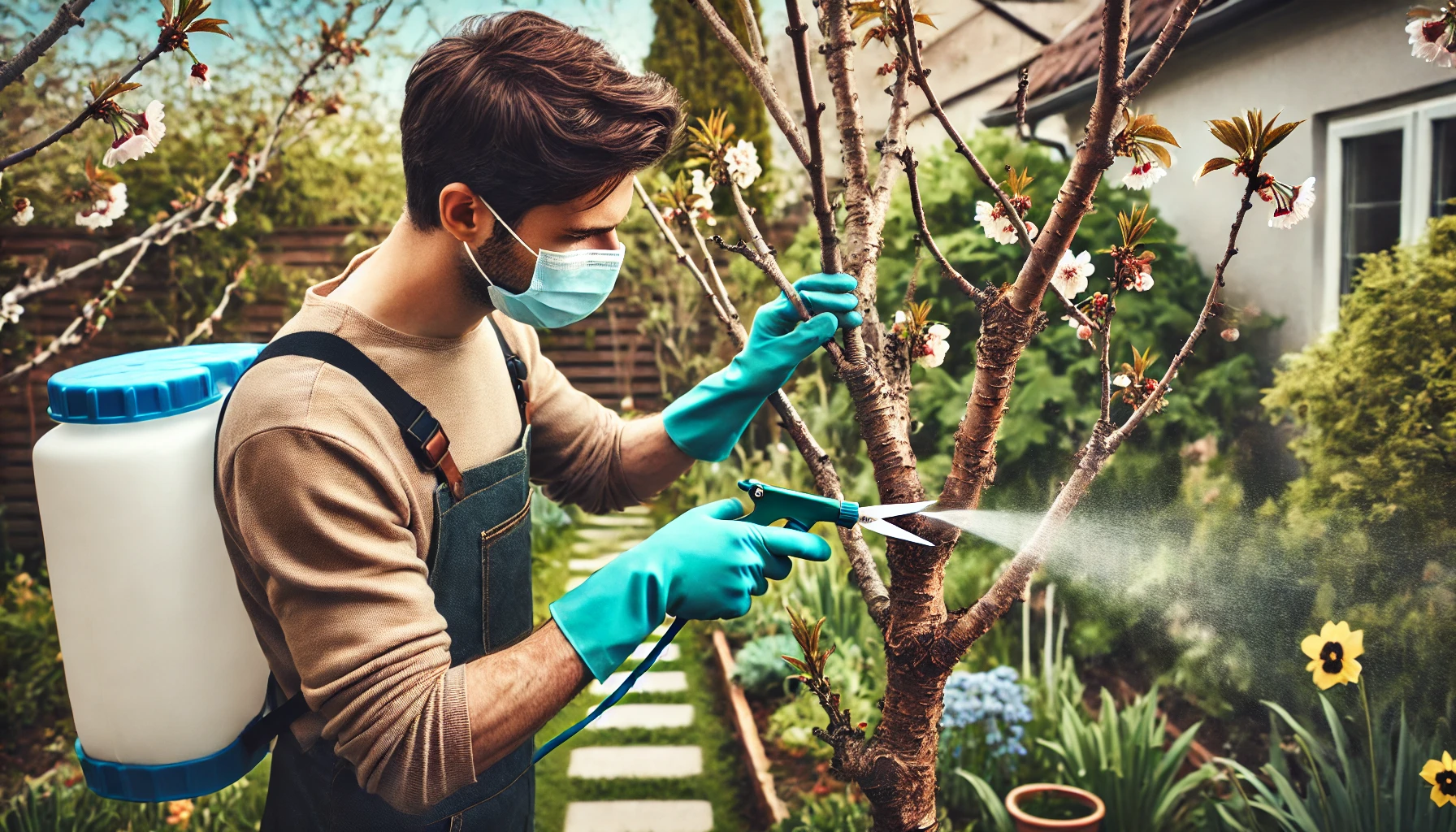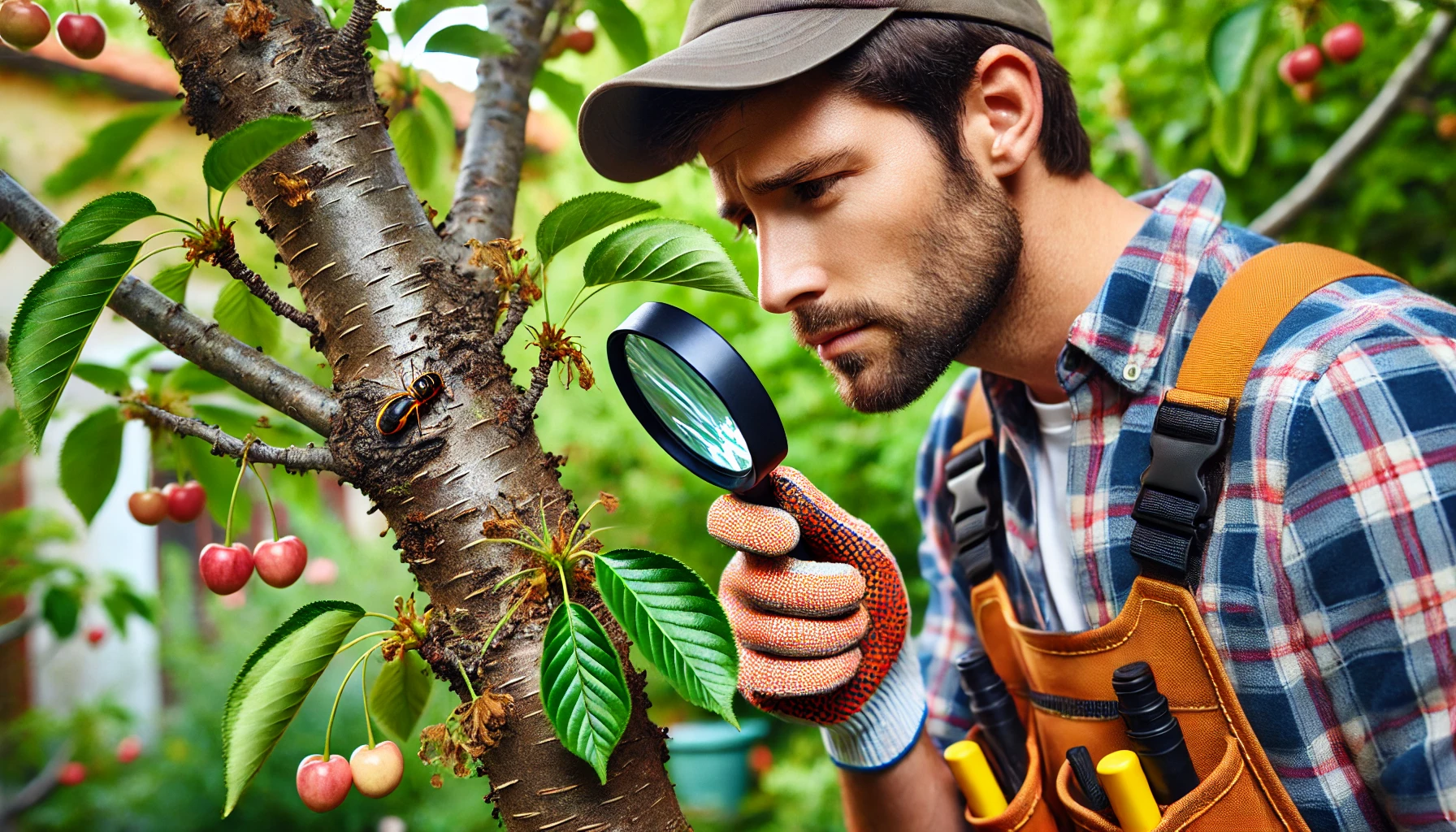
Cherry Tree Canker: Symptoms, Prevention, and Treatment Guide for Healthy Trees
Cherry trees are a stunning addition to any landscape, but their beauty can quickly fade when threatened by disease. One of the most destructive conditions they face is cherry tree canker, a bacterial or fungal infection that can severely damage or even kill your tree if left untreated. In this article—Cherry Tree Canker: Symptoms, Prevention, and Treatment Guide for Healthy Trees—we’ll walk you through everything you need to know to protect your tree from this silent threat. From identifying early warning signs to applying proven prevention strategies and effective treatments, you’ll gain the knowledge needed to keep your cherry trees thriving.
Table of Contents
Toggle What is Cherry Tree Canker?
What is Cherry Tree Canker?
Cherry tree canker is a serious fungal or bacterial disease that affects cherry trees 


- Common culprits include fungi like Leucostoma spp. or bacteria like Pseudomonas syringae.
- The disease enters through wounds caused by pruning, insect damage, frost cracks, or storms.

Spores or bacteria are spread by rain, wind, tools, or insects. Infection is most common during wet, cool weather, especially in spring and fall.


- Sunken, dark brown or black patches on branches
- Sticky, amber-colored gum oozing from the bark
- Dieback of branches and leaves turning brown
- Cracks or splits in the bark

Cherry canker can weaken your tree over time, leading to stunted growth, fruit loss 
This is a disease you don’t want to ignore! Early detection and proper care can save your cherry tree and keep it thriving.
Symptoms of Cherry Tree Canker 

Recognizing cherry tree canker early can save your tree from serious damage. Watch for these clear signs:

You’ll notice dark, sunken spots on branches or the trunk. These are the most visible signs of canker infections.

Sticky amber or brown sap may ooze from wounds. This is the tree’s natural response to infection.

Leaves near the infected area may wilt, yellow, or fall prematurely—even when the rest of the tree looks healthy.

Bark around the canker can become cracked, dry, and may peel away. Dead bark areas may expand if untreated.


If canker spreads, it can block nutrients, leading to reduced blooms or fruit production.

Affected branches often die back from the tip, especially in late spring or summer.

Causes and Contributing Factors 

Understanding why your plant is struggling is the first step to saving it. Here are the main causes behind common issues:
Overwatering or Poor Drainage
Too much water can suffocate roots, leading to root rot. Make sure your pot has drainage holes and let soil dry between waterings.Lack of Proper Light
Plants need the right light to thrive. Too little light can weaken growth, while too much direct sun can scorch leaves.Temperature Stress
Sudden cold drafts or heat spikes can shock plants. Keep them in stable environments away from heaters or windows in winter.Pest Infestation
Tiny insects like spider mites, aphids, or fungus gnats can silently damage plants. Regularly inspect leaves (especially undersides) for signs.Nutrient Imbalance
Yellowing, curling, or stunted growth often means your plant isn’t getting what it needs. Use a balanced fertilizer and follow instructions carefully.Transplant Shock
Repotting can temporarily stress your plant. It may wilt or drop leaves but usually recovers with proper care.Chemical Sensitivity
Tap water with chlorine or fluoride, or excess fertilizer salts, can harm roots. Use filtered water and avoid overfeeding.Crowded Roots (Rootbound)
When roots outgrow the pot, they can’t absorb water or nutrients efficiently. Repot in a slightly larger container to give them room.
By identifying these factors early, you can take targeted steps to help your plant recover and thrive.
Prevention Tips 

Want to stop issues before they start? Here’s how to keep your plant thriving:

Make sure your plant gets the right amount of sunlight—too little or too much can stress it. Use grow lights if natural light is limited.

Overwatering is a top plant killer. Always check the top inch of soil—if it’s dry, it’s time to water. Use pots with drainage holes.

Stuffy environments encourage mold and pests. Keep plants spaced out and open a window for fresh air.

Use the right fertilizer at the right time. Avoid overfeeding—it can burn the roots.

Dust off leaves and remove dead parts. A clean plant is a healthy plant!

Inspect leaves (top and bottom) every week. Catch bugs early to avoid infestations.

Match the plant to the room—humidity, temperature, and light should suit the plant’s needs.

Roots outgrowing the pot? Move your plant to a bigger home to keep it happy and growing.
Simple habits = long-lasting plant health!
Treatment Options 
When your plant shows signs of stress or disease, early and proper treatment can make a big difference. Here are the most effective and easy-to-follow treatment options:
Remove Affected Parts
Carefully prune any diseased or damaged leaves, stems, or roots. Use sterilized scissors to prevent spreading infection.Adjust Watering
Overwatering or underwatering is a common issue. Ensure the soil is moist but not soggy. Let the top inch dry out before watering again.
Improve Lighting
Move the plant to a location with the right light level. Some plants need bright indirect light, while others prefer partial shade.Treat Pests Naturally
For minor pest problems like aphids or spider mites, spray a mix of water and neem oil or mild soapy water. Reapply every few days as needed.Use Fungicides or Insecticides (if needed)
If natural remedies don’t work, choose an appropriate organic or chemical treatment. Always follow label instructions and wear gloves.Feed Properly
A balanced fertilizer can help your plant recover faster. Avoid overfeeding, which can burn roots and worsen the condition.Improve Air Circulation
Stagnant air can promote mold or mildew. Space out your plants and ensure good airflow in the room.Repot if Necessary
If the roots are crowded or the soil is compacted, repot into fresh, well-draining soil to support recovery.
Quick Tip: Always observe changes closely after any treatment to ensure your plant is responding well!
When to Call a Professional 

While many plant issues can be handled at home, sometimes calling a professional is the smart move. Here’s when you should consider it:

If your plant continues to decline even after trying all the right care techniques, it’s time to get expert help. Ongoing wilting, yellowing, or leaf drop might signal deeper issues like root rot or pests in the soil.

Noticing lots of bugs, sticky residue, or webbing? A pest infestation can quickly spread to other plants. A professional can diagnose and treat the issue effectively using safe methods.


Fungal or bacterial diseases aren’t always obvious. If your plant has unusual spots, mold, or smells bad, an expert can identify the problem and recommend the right treatment before it spreads.

Moving a large or established plant incorrectly can shock or kill it. For big jobs—like relocating trees or large shrubs—a professional ensures safe, successful transplanting.

Roots growing into pipes, damaging patios, or leaning trees? These are not DIY problems. A certified arborist or landscaper can safely assess and fix them.

Sometimes, it’s worth hiring a pro just to be sure your plant is getting the best care. They can offer tips, care routines, and ongoing maintenance.

Long-Term Tree Care & Recovery
Taking care of a tree after planting or damage isn’t a one-time task—it’s an ongoing commitment. Here’s how to ensure your tree thrives for years to come 

Even mature trees need water—especially during dry spells. Deep water at the roots every 2–4 weeks, depending on the species and climate.

Add 2–4 inches of organic mulch around the base (not touching the trunk) to retain moisture, reduce weeds, and regulate soil temperature.

Annually prune dead, diseased, or weak branches to promote healthy growth and airflow. Winter or early spring is often best for pruning.

Regularly inspect the tree for signs of pests or disease (spots, oozing sap, holes in leaves). Early detection means easier treatment.

Use a slow-release tree fertilizer if growth is weak or leaves look pale. Spring is usually the best time.


Install stakes or braces for young or storm-damaged trees—but don’t leave them on for more than 1–2 growing seasons.

Schedule a yearly check with a certified arborist for professional guidance and preventive care.
With patience and proper care, your tree can grow strong, healthy, and beautiful for generations 
 Conclusion
Conclusion
In conclusion, Cherry Tree Canker: Symptoms, Prevention, and Treatment is a vital topic for anyone who loves growing healthy cherry trees. Early detection and prompt action are key to protecting your tree from this damaging disease. By understanding the symptoms—such as sunken bark, gummosis, and wilting leaves—you can catch the problem before it spreads too far. Prevention methods like proper planting, pruning, and maintaining good tree health can go a long way in keeping your cherry tree safe. If an infection does occur, timely treatment with fungicides or copper-based sprays, along with careful removal of infected tissue, can help restore your tree.

Remember, a little proactive care now can lead to many years of thriving, beautiful cherry trees in your garden. Keep an eye out for any signs of trouble, and you’ll be well on your way to ensuring your tree’s long-term health and vitality!
Frequently Asked Questions(FAQ)
What is cherry tree canker?
Cherry tree canker is a bacterial or fungal infection that affects cherry trees, causing damage to the bark, branches, and leaves. It can lead to significant dieback, oozing of sap, and even tree death if left untreated. There are two main types of canker: bacterial canker and fungal canker, both of which need to be addressed promptly to protect the tree.
What are the symptoms of cherry tree canker?
Common symptoms of cherry tree canker include:
- Sunken, discolored spots or lesions on the bark
- Gummosis (oozing sap or sticky substance from the tree)
- Wilting or yellowing leaves
Dieback of branches and twigs
These signs may appear suddenly, and if noticed early, can help prevent the spread of the infection.
How does cherry tree canker spread?
The disease spreads through infected tools, wounds on the tree (such as those caused by pruning or storms), and contaminated soil or plant material. It can also spread from nearby infected trees. Proper sanitation and care can reduce the risk of transmission.
Can cherry tree canker be cured?
While there is no permanent cure for canker, the disease can often be managed effectively with early intervention. By removing infected tissue, applying treatments, and maintaining tree health, you can reduce the spread of the disease and help the tree recover.
Can I eat fruit from a tree infected with cherry tree canker?
Yes, in most cases, the fruit is safe to eat. However, it is essential to remove and dispose of any infected or damaged fruit to avoid potential contamination. The main concern with canker is the health of the tree itself, rather than the fruit.
When should I call a professional for cherry tree canker?
If the infection seems widespread, or if you’re unsure about how to properly treat or prune the tree, it’s best to consult a professional arborist. A professional can help assess the extent of the infection and recommend the most effective treatment methods.
How fast does cherry tree canker spread?
The spread of cherry tree canker can vary based on environmental conditions and the severity of the infection. In some cases, it can spread rapidly, especially during wet weather. It’s important to monitor the tree regularly and act quickly when symptoms appear to prevent further damage.
Can I prevent cherry tree canker naturally?
While there is no natural cure for cherry tree canker, maintaining a healthy tree through proper care, good soil conditions, and disease-resistant varieties can help prevent infections. Organic treatments like neem oil or copper sprays may also offer some protection, but they are most effective when used preventatively.



